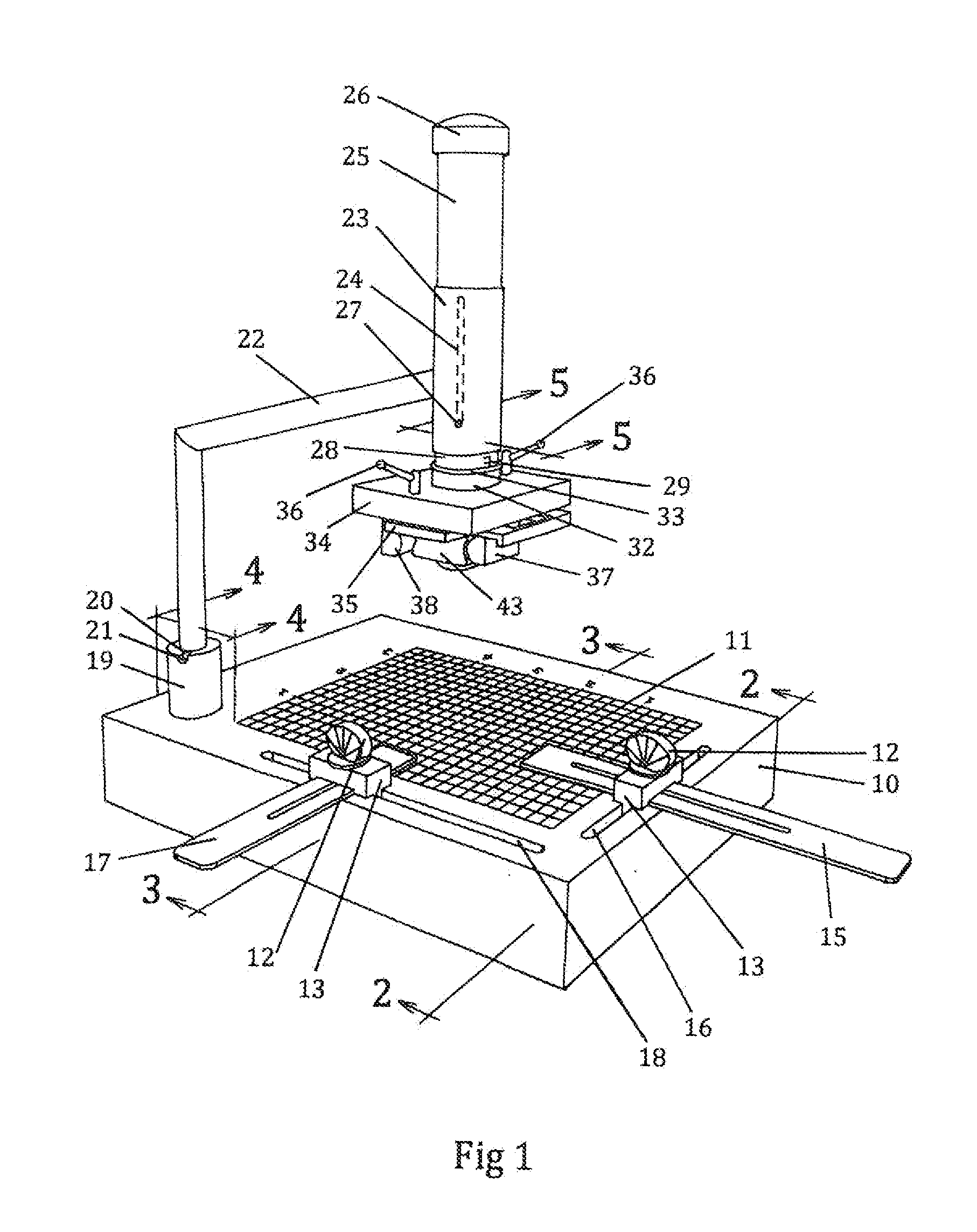Stamp press
- Summary
- Abstract
- Description
- Claims
- Application Information
AI Technical Summary
Benefits of technology
Problems solved by technology
Method used
Image
Examples
first embodiment
[0017]Referring to the perspective view FIG. 1, a preferred embodiment of my invention as comprising of a flat bed 10 adapted to receive and support one sheet of paper stock, or one envelope, or one blank form, or other medium upon which the printed impression is to be made on by means of paper stock alignment and securing it to bed 10, a plunger 25 by means to make the impression, and means to apply ink to stamp 43.
[0018]To facilitate accurate positioning of the sheet of paper stock, imprinted on the upper hard smooth surface of the bed 10 are appropriate grid lines 11. Said grid lines 11, commencing at four centimeter from bed 10 edge with interval of one-millimeter and parallel to vertical T-slot 16 and horizontal T-slot 18. Numerical graduation index are imprinted on bed 10 surface, reading horizontally left to right and vertically top to bottom.
[0019]Referring to FIG. 1, this embodiment requires two of slider 13, which are constructive identically; hence, one is used for longit...
PUM
 Login to View More
Login to View More Abstract
Description
Claims
Application Information
 Login to View More
Login to View More - R&D
- Intellectual Property
- Life Sciences
- Materials
- Tech Scout
- Unparalleled Data Quality
- Higher Quality Content
- 60% Fewer Hallucinations
Browse by: Latest US Patents, China's latest patents, Technical Efficacy Thesaurus, Application Domain, Technology Topic, Popular Technical Reports.
© 2025 PatSnap. All rights reserved.Legal|Privacy policy|Modern Slavery Act Transparency Statement|Sitemap|About US| Contact US: help@patsnap.com



